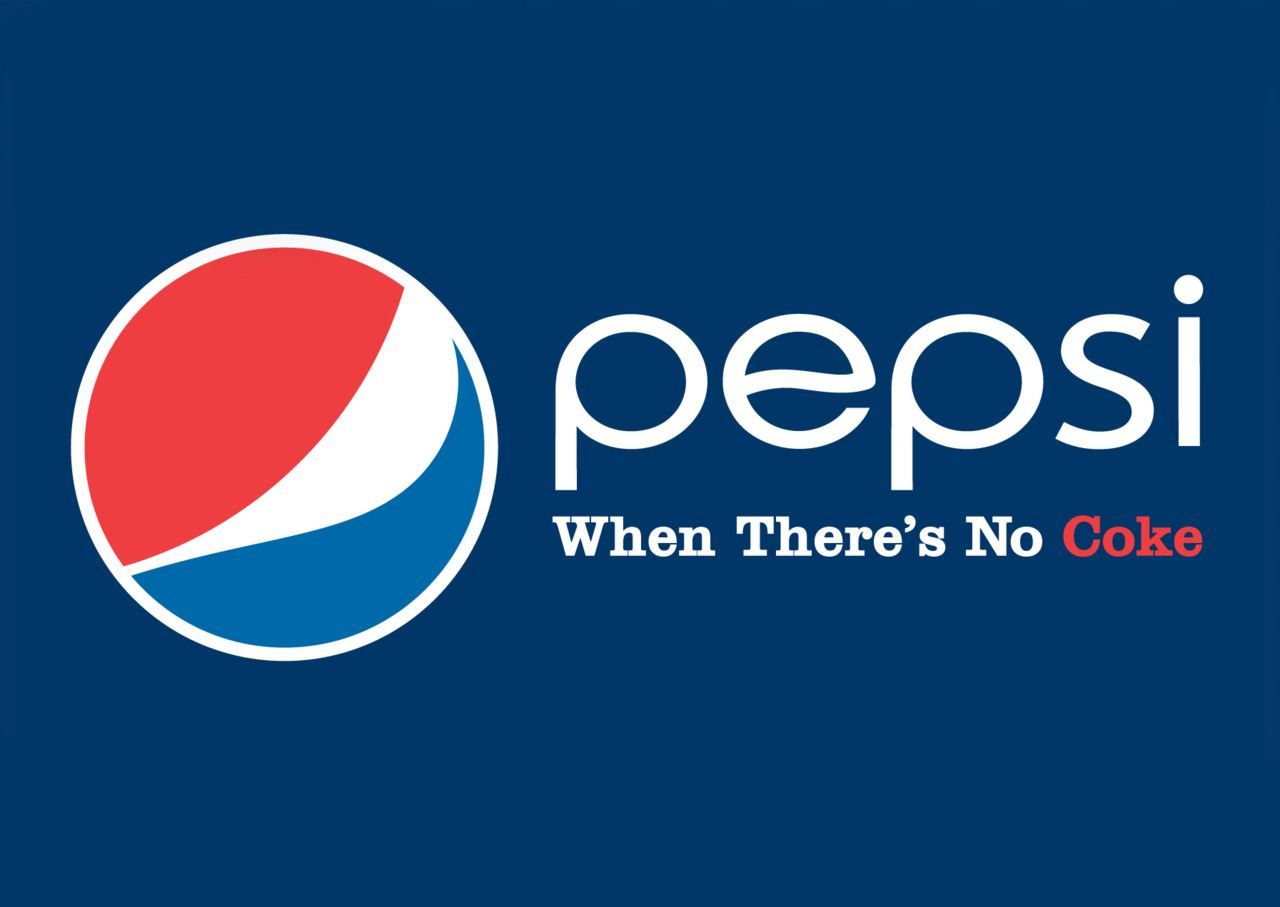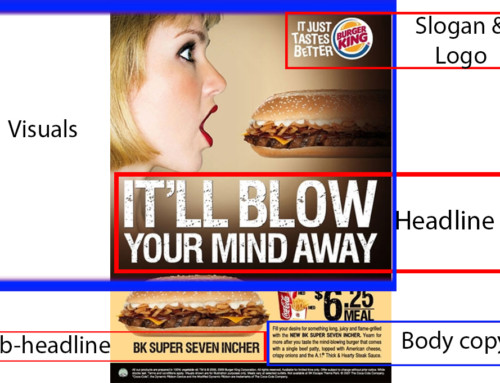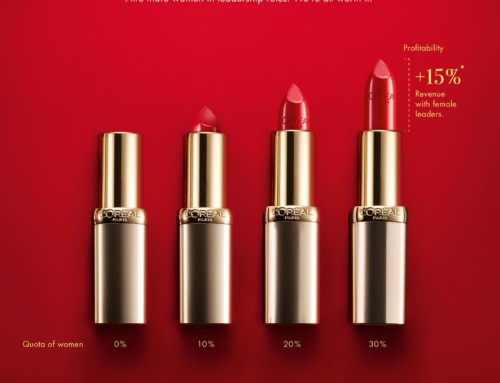There is a reason why people go to university for three to four years. The main reason is to learn concepts that are applied in the work environment. It is sad to see degreed individuals using common sense at work. Most of the time common sense is used at work, a business loses money.
If you have done business with an advertising agency before reflect on the following statement:
Does the advertising agency conduct pre-launch advertising research?
I bet my last dollar that 98% of advertising agencies do not conduct such research. I am sorry to say that if that is the case, you have been wasting your money. Launching advertisements without pre-testing them first, is an example of using common sense on the job.
I mentioned in my previous article that one of the best practices for advertising research is to draw inspiration from past advertising campaigns. Drawing inspiration does not mean that you do not conduct pre-launch advertising research. New advertising research is required for every project. Late us take a look at how you should approach the pre-testing of an advertising campaign.
An Example Of The Negative Effect Of Not Conducting Advertising Research

A good example is Geisha soap. This is a soap that is sold in Africa. in Africa, Geisha does not mean anything. Look at what Geisha means in the West.
Geisha (芸者) (/ˈɡeɪʃə/; Japanese: [ɡeːɕa]),[1][2] geiko (芸子), or geigi (芸妓) are female Japanese entertainers who perform traditional Japanese artforms, such as traditional dance and singing. They are distinctively characterized from the kimono and the oshiroi makeup they wear.
Contrary to popular belief, geisha are not the Eastern equivalent of a prostitute – a misconception originating in the West due to foreign interactions with oiran (courtesans) and other sex workers, whose appearance had been similar to that of geisha.
Wikipedia
If you create an advertisement for Geisha in the West. You might not get a good reception because of their misconceptions. Now, consider that you have spent a lot of money on an advertising campaign. And then you find out that the message is not appropriate for your audience. This is a very good reason to embark on pre-launch advertising research.
Statistics Is The Backbone Of Advertising Research
In all types of research, statistics is the backbone. Statistics ensures that all recommendations are objective. Mathematical models are used to show patterns in the responses of customers. The patterns give a clear indication of the path that you should take. Remember, for every question that is asked in marketing, there is a mathematical model that gives you an accurate answer.
Never rely on brainstorming or assumptions. Always calculate everything when it comes to making business decisions.
Now that we have that out of the way. Let us get down to the business of the day.
Marketing Strategy Should Guide Your Advertising Research
The first question that someone should be asking is, why do we want to advertise? The reasons for wanting to advertise determine how to conduct advertising research. Marketing strategy best practice entails that you ask this question from the perspective of the customer.
Do Customers Want The Brand To Bring In New Ideas Or Not?
Constant scanning of the market can show that consumer behavior has transformed towards new trends and practices. Such information can come up during regular market research excercises. When a trend emerges were customers indicate that they might want something new, advertising research is required.
Advertising research comes in to determine what new trends are coming up. The research also comes in handy by discovering what message would endear customers to your brand in line with the new trends.
In the opposite direction, customers might not want your brand to go with the new trend. Knowledge of this ensures that the advertising campaign that you launch resonates with your customer base.
Statistics is critical in that you use predictive analytics to get answers to all of the questions above.
Do Customers Have The Desired Image of Your Brand?
The way customers view your brand determines how much they spend on your brand. The fact that perception affects average revenue per user is reason enough to conduct pre-launch advertising research.
Not having an accurate picture of what consumers think of your brand leads to advertising campaigns filled with misplaced messaging. Your company might advertise in a manner that positions itself as a premium provider of products and services. But when your customers view you in another light, this will reduce the effectiveness of your advertisements.
In light of this fact, it is important to conduct pre-placement advertisement research. This way you find out if the message is in line with customer perceptions to ensure maximum returns.
What About When Change Is Inevitable?
While it is important to know what the customer wants and to fit into that profile. There are times where changes in consumer behavior are so drastic that you have to move with the times.
In this case, you have to use predictive analytics to determine whether or not customers accept the new ideas.
Mathematical models are important because during transitions in trends and traits customers might switch to competitors. If you fail to convince customers that they should move forward with you, they will leave you.
It is imperative that you pre-test new ideas using advertising research before running the campaigns.
Using Statistics In Your Concept Testing
The advertising concept is basically the framework in which the campaign has to be situated. Important points to consider are consumer benefits (for example: This shop sells Cds), the reason why (for example: This shop is the cheapest) and the tonality (for example: the use of teasing words in campaign slogans). The more an ad includes criteria like catching of interest, relevance, credibility, retentivity, continuity the more it will be successful. The target group plays an important role as well
Bridgitte Schuster
Advertising research is used to determine whether or not the advertising concept is in line with what your customers require.
You have to make sure that all of the visual and nonvisual queues contribute to telling the same story. Another issue is to ensure that the strategy dovetails with everything else.
Predictive analytics are used to determine which elements of the concept resonate with the customer the most. For example, you can use statistics to determine whether customers prefer blue or black as the theme in an advert. Conducting such research is important as it has a bearing on income at the end of the day.
Modalities Of Concept Testing In Advertising Research
Qualitative Interviews
For the sake of containing costs, keep the test group between fifty to one hundred people.
Conduct qualitative interviews with discussion topics focused on elements of the advertisement.
Conduct regression analysis to determine the most desirable elements of the concept. The most desirable elements are the ones that will feature in the advertisement.
Tests Of Free Association
The idea is to get an idea of the Top of Mind when it comes to elements in an advertising campaign. You want to find out what people familiarise with. The closer you can match your advertising to what people already think of, the better.
However, you should take care to not be simplistic in approach when it comes to Tests of Free Association. Most researchers will just list the elements that are top of mind and leave things there.
To get useful information you should match the responses to buyer intent. This way you know what consumers are likely to do based on the information that they have provided. This turns what were just customer opinions into actionable information.
The best way to being the customer responses to life is by using conducting regression.

The Rank Order Method
When you are interviewing people you can use the Rank Order Method to let respondents tell you which advertising concepts they prefer.
It is important to do so as you should always adopt an outside-in approach when executing marketing strategy.
After you get your list of desired concepts, use mathematical models to determine which concept will lead to the most conversions after an advertising campaign has been run,
Mathematical modeling is required as knowing what people like is not enough to make a strategic decision. People’s preferences always have to be tied to their intent. Intent is the most important part of the equation as that is where we make money.
So a certain concept may come out as the preferred concept. But when that information is combined with other information in a statistical model, you could find out that a less preferred concept might lead to more sales.
Making Use Of Absolute Comparisons
Absolute comparisons involve comparing your offerings to the ideal situation. Again, you use research to determine what people’s ideal situation is.
A lot of researchers make the assumption that ‘high’ standards create an ideal situation. This is not true as many a time customers are content with less than perfect situations. Increasing standards comes at a cost. As a result, it is important to know how far you should go before customers are content enough to not switch to the competition. This ensures that you get the most profit from your operations.
So, use research to get the benchmark from the customers, not specifically to your advertisements. And then use absolute comparison tests for customers to tell you how your advertising concept matches up against the benchmark.
Again, you do not have to get to the benchmark. Use regression to determine the point at which diminishing returns to your efforts set in. Then set your concept and consequently, your advertising budget, at that level.
How To Test Your Advertising Themes
Select A Category For The Theme Of Your Advertising Campaign
There is no universal way to categorise slogans and themes when it comes to advertising research. This makes it a bit tricky. However, Mohan attempted to classify the slogans and themes according to the following criteria:
Utilitarian: emphasis on the value of the product and/or service; directed towards providing satisfaction for the money or effort spent on obtaining the product/service.
Mohan
Focused: an extension of utilitarian themes; which will appeal to specific market/audience segments.
Informative: emphasis only on the information about the product/service being advertised while no explicit selling message is present.
Non-Specific: A vague or diffused message that contains only passing references to products or advertisers.
Achievement Orientation: highlighting the achievements in terms of sales, profits or awards won by the advertiser.
Descriptive & Projective: a combination of Informative and Achievement Oriented themes.
New Product, service, scheme or idea: A new entry in the Market
Contributory to economy or industry: mainly relevant to institutional advertising, emphasising the contributions made by the advertiser towards industrial growth and economic development.
Knowing the theme is very important as it sets the tone for the structure of your advertising research.
The type of category determines the type of data that you collect during the research process. Consequently, this leads to different approaches being taken to process the data.
Some categories require you to collect quantitative information. Some other categories, such as the Descriptive & Projective advertising theme, require you to collect qualitative information. The paths you take from there, are totally different.
Use Regression Instead Of Coding To Analyse Data Collected From Advertising Theme Research
It is wise for you to test each of these themes over the life cycle of your company in order to find out which themes work the best.
As I always say, test the market. No matter what history tells you about your market, continue to explore new ways of doing things.
I can guarantee you that 99% of your competitors will not put in that type of effort into their business.
Continuous testing of various advertising themes using advertising research will give you an edge over your competition. In the medium to long term, you will get an increase in your return on investment.
Most researchers advise that you use motivation research techniques such as in-depth interviews and group discussions. I have a different, and more effective approach. I am not a fan of collecting information from open-ended sources because it is very difficult to analyse the information. Can you really code open ended responses into categories accurately? I do not think so. To start with, the information is distorted the moment you assume what the respondent means when they say something. Who says that your coding system is accurate?
Use a research questionnaire to collect information about what respondents think about your theme. Where possible, collect continuous instead of categorical information as this is much easier to analyse. Categorical information takes about three times the amount of time that it takes to analyse continuous information. Paying attention to the approach in terms of data collection will make it easier to sell the concept to your stakeholders.
You Cannot Get Away With Not Conducting Pre-Launch Advertising Research
Conducting pre-launch advertising research activities takes time and resources. But if you consider what you stand to lose from just winging it, then you will go down this path.
The aggregate effect of being scientific in your approach to advertising will benefit you in the long term. Bit by bit, you will differentiate yourself from the competition in ways that the compertition cannot identify and duplicate.
Everyone else is using common sense in business. Companies do battle at product level. Take your operations into the stratosphere by gaining an edge from a 360 degree standpoint.
Advertising research is worth your while. You get more from your investment in more ways than one.
Do you think that conducting pre-launch advertising research is worth your while?







Leave A Comment